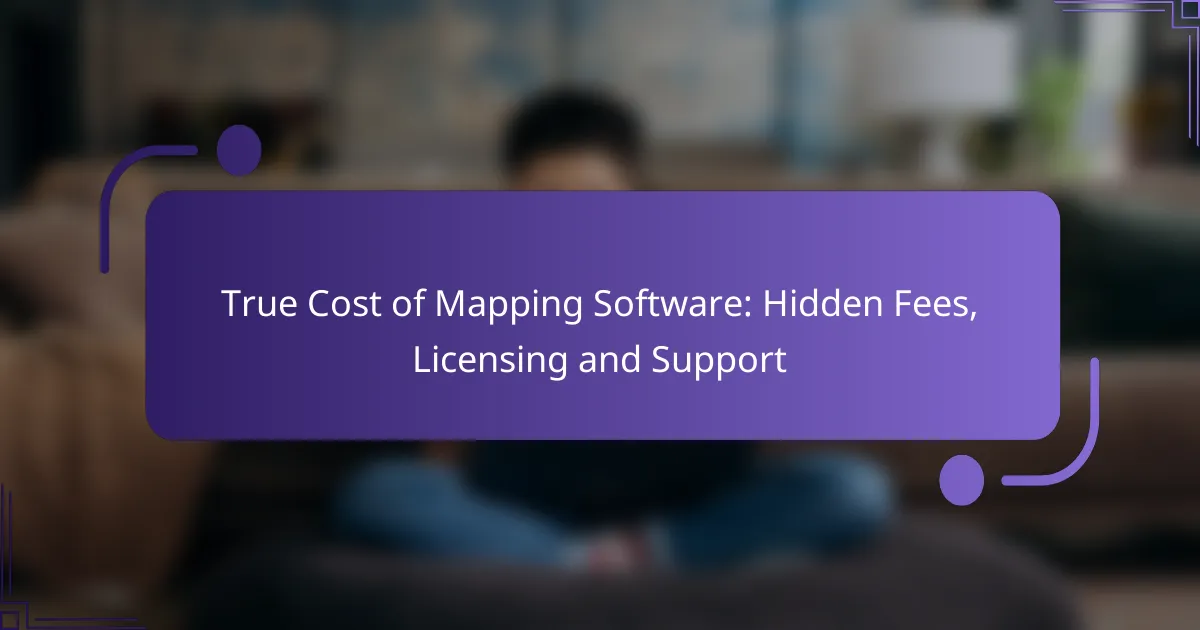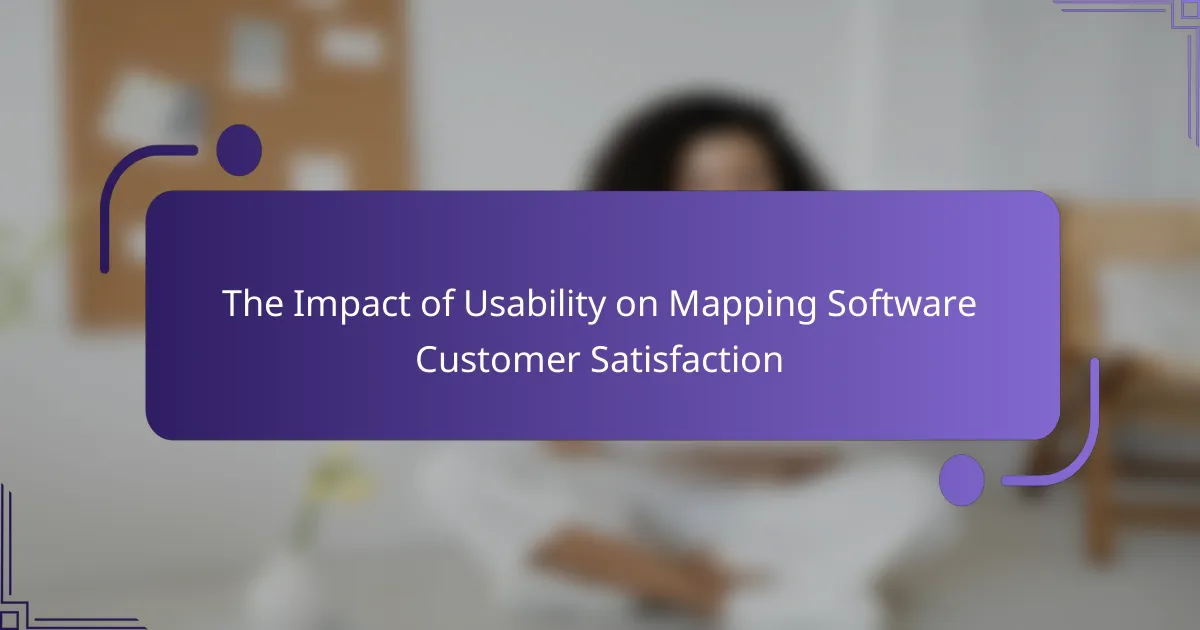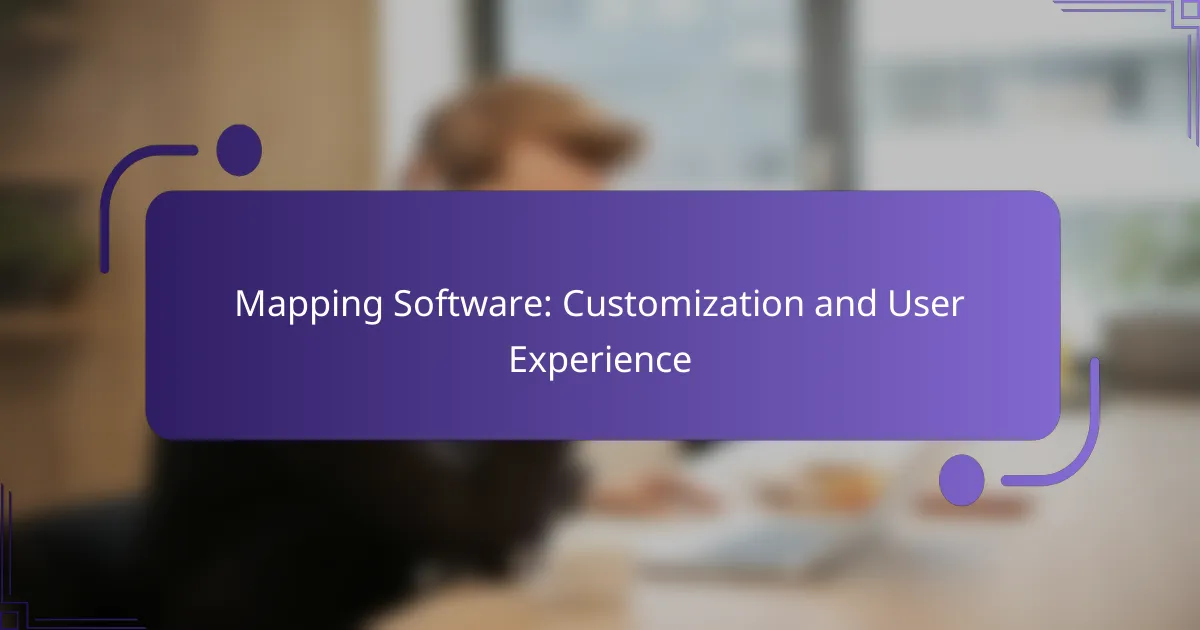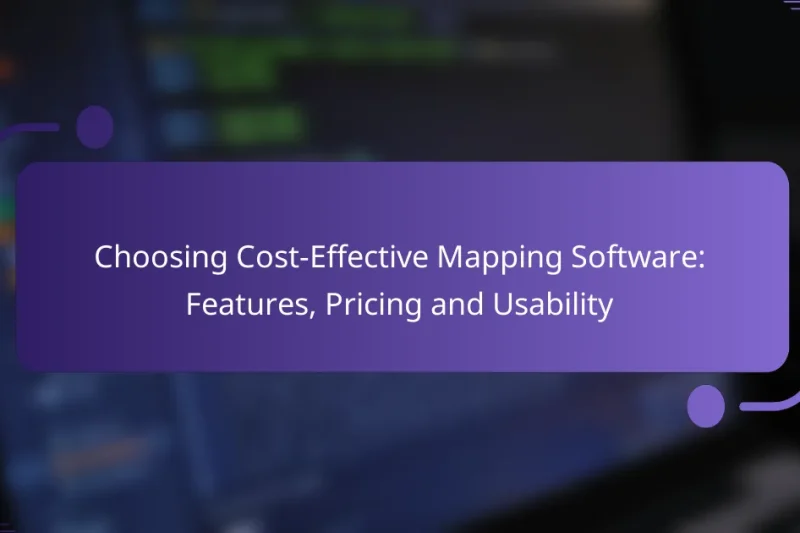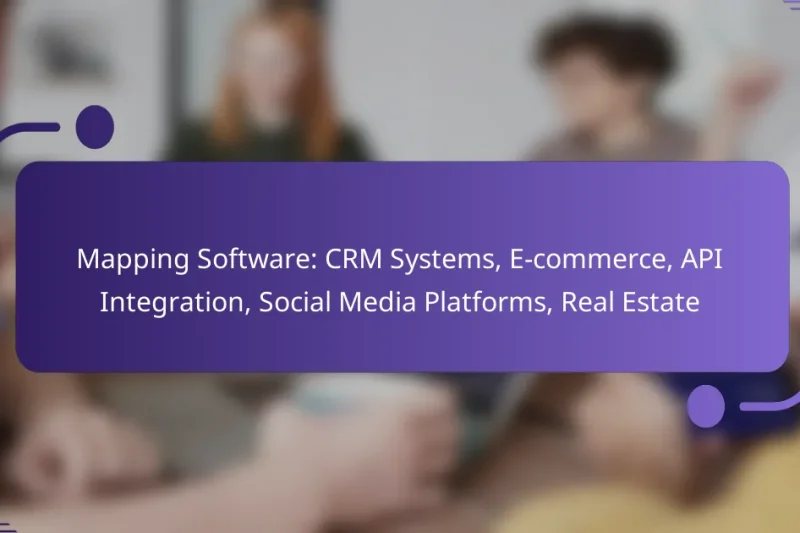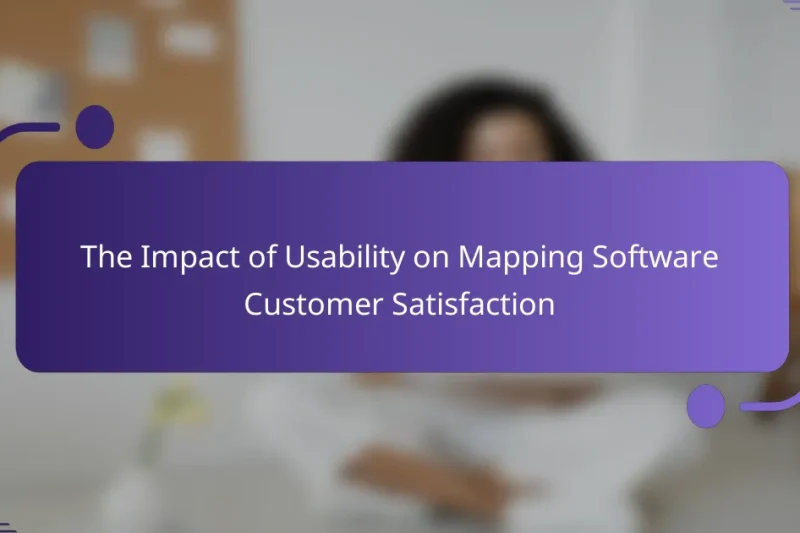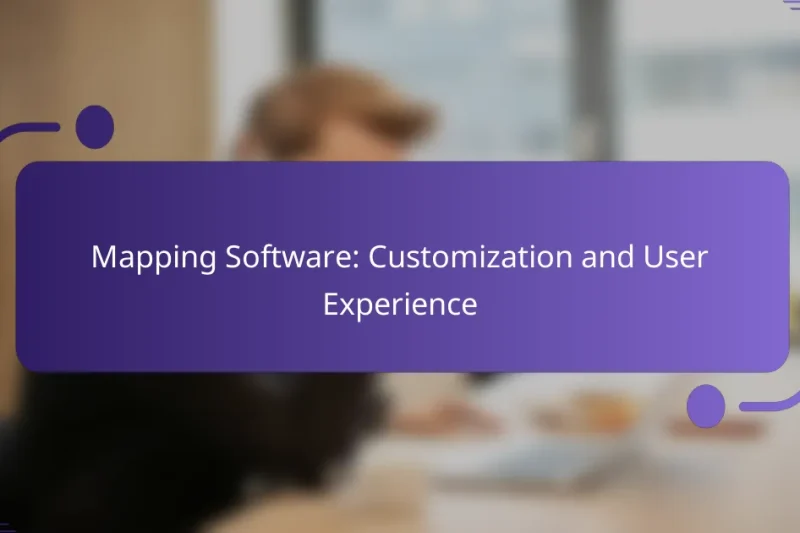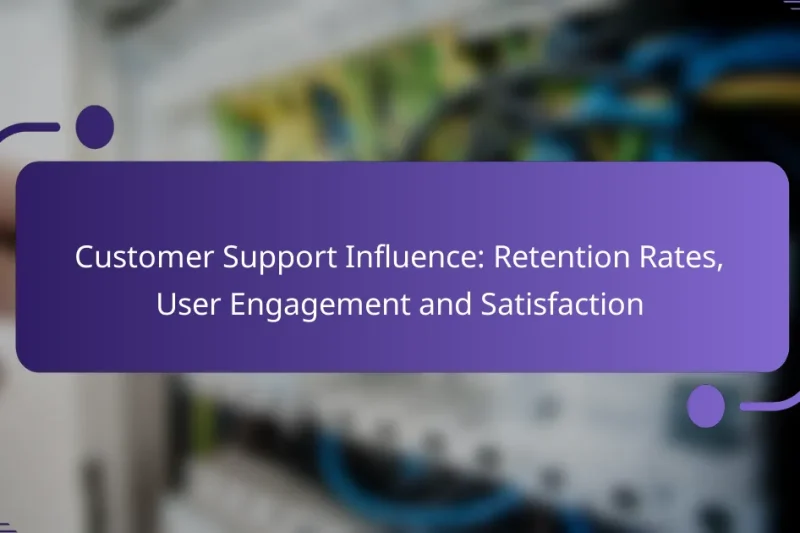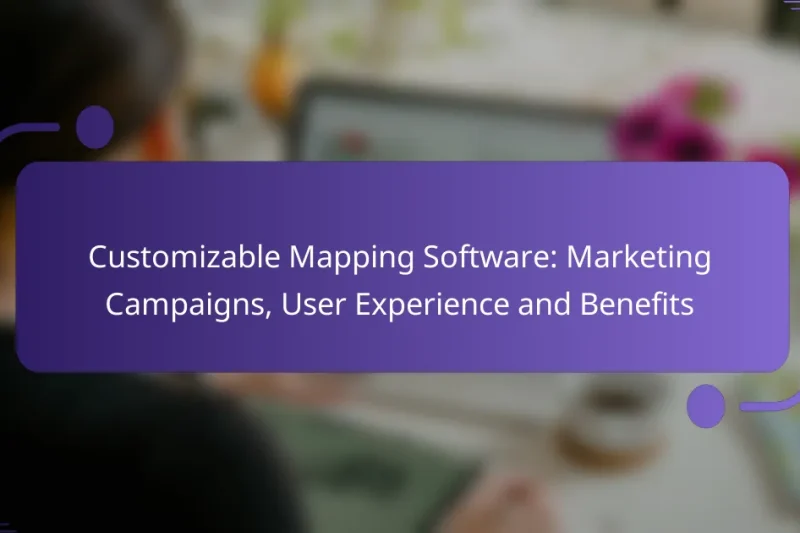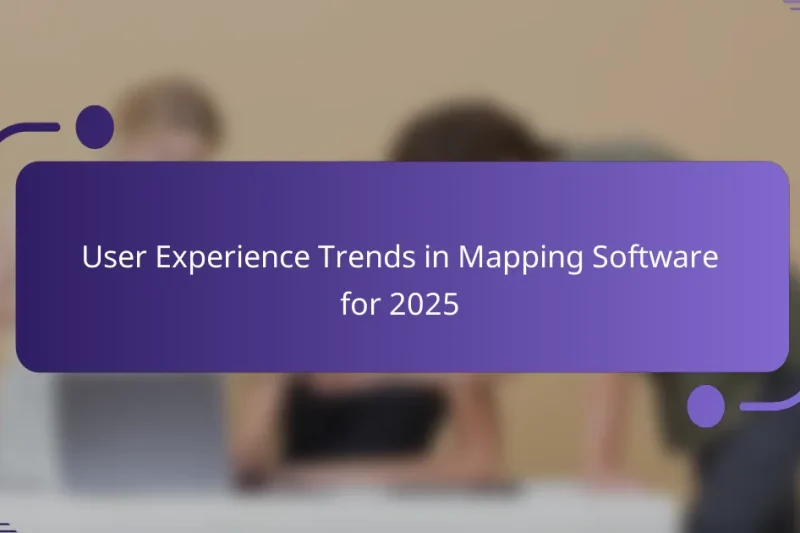Choosing cost-effective mapping software is crucial for effectively visualizing geographic data without overspending. By focusing on … Choosing Cost-Effective Mapping Software: Features, Pricing and UsabilityRead more
Mapping software plays a crucial role in various industries by providing tools for visualizing and analyzing geographic data. With a range of options available, including ArcGIS, QGIS, and Google Maps Platform, users must consider their specific needs, ease of use, and budget when selecting the right solution. This guide will help you navigate the diverse landscape of mapping software to find the best fit for your organization.
True Cost of Mapping Software: Hidden Fees, Licensing and Support
The true cost of mapping software extends far beyond its initial purchase price, often encompassing hidden … True Cost of Mapping Software: Hidden Fees, Licensing and SupportRead more
Mapping Software: CRM Systems, E-commerce, API Integration, Social Media Platforms, Real Estate
Mapping software plays a crucial role in various sectors, including CRM systems, e-commerce, and social media … Mapping Software: CRM Systems, E-commerce, API Integration, Social Media Platforms, Real EstateRead more
The Impact of Usability on Mapping Software Customer Satisfaction
The usability of mapping software plays a crucial role in shaping customer satisfaction, as it directly … The Impact of Usability on Mapping Software Customer SatisfactionRead more
Mapping Software: Customization and User Experience
Mapping software that prioritizes customization empowers users to create tailored maps that meet their unique requirements. … Mapping Software: Customization and User ExperienceRead more
Mapping Software: Data Accuracy for Urban Planning and Analysis
Mapping software plays a vital role in enhancing data accuracy for urban planning and analysis by … Mapping Software: Data Accuracy for Urban Planning and AnalysisRead more
Mapping Software: Customization Capabilities for Education
Mapping software tailored for educational purposes offers a range of customization capabilities that enhance the learning … Mapping Software: Customization Capabilities for EducationRead more
Customer Support Influence: Retention Rates, User Engagement and Satisfaction
Customer support plays a vital role in shaping retention rates, user engagement, and overall satisfaction. By … Customer Support Influence: Retention Rates, User Engagement and SatisfactionRead more
Customizable Mapping Software: Marketing Campaigns, User Experience and Benefits
Customizable mapping software empowers businesses to elevate their marketing campaigns by providing the tools to visualize … Customizable Mapping Software: Marketing Campaigns, User Experience and BenefitsRead more
User Experience Trends in Mapping Software for 2025
As we look towards 2025, user experience trends in mapping software are set to evolve significantly, … User Experience Trends in Mapping Software for 2025Read more
What are the best mapping software solutions?
The best mapping software solutions vary based on user needs, including features, ease of use, and cost. Popular options include ArcGIS by Esri, QGIS, Mapbox, Google Maps Platform, and Leaflet, each offering unique functionalities for different mapping tasks.
ArcGIS by Esri
ArcGIS by Esri is a comprehensive mapping and analysis tool widely used in various industries. It provides advanced features such as spatial analysis, data visualization, and real-time mapping capabilities, making it ideal for professionals in urban planning, environmental science, and logistics.
While ArcGIS offers powerful tools, it comes with a subscription cost that can be significant for small businesses or individual users. Consider your budget and specific needs before committing to this platform.
QGIS
QGIS is an open-source mapping software that allows users to create, edit, and analyze geospatial data. It is highly customizable, with a wide range of plugins available to extend its functionality. This makes QGIS a popular choice for users who require flexibility without the associated costs of proprietary software.
However, the learning curve can be steep for beginners. Users should invest time in tutorials and community forums to maximize their experience with QGIS.
Mapbox
Mapbox is a powerful mapping platform that focuses on customizable maps and location data. It is particularly favored by developers for its API and SDK offerings, allowing for the integration of maps into web and mobile applications. Mapbox provides high-quality visuals and supports various data formats.
While Mapbox has a free tier, costs can increase with higher usage levels. Users should monitor their usage to avoid unexpected charges.
Google Maps Platform
The Google Maps Platform offers robust mapping solutions with extensive data and features, including geocoding, routing, and real-time traffic information. It is widely used for applications that require reliable location services and is known for its user-friendly interface.
Pricing is based on usage, which can be economical for small-scale projects but may become costly for larger applications. Users should familiarize themselves with the pricing structure to manage expenses effectively.
Leaflet
Leaflet is a lightweight, open-source JavaScript library for mobile-friendly interactive maps. It is easy to use and integrates well with various mapping services, making it a great choice for developers looking to create simple maps without extensive overhead.
While Leaflet is not as feature-rich as some other options, its simplicity and ease of integration make it suitable for many web applications. Users should consider their specific mapping needs to determine if Leaflet is the right fit.
How to choose mapping software?
Choosing mapping software involves assessing your specific needs, integration capabilities, and pricing models. A clear understanding of these factors will help you select the most suitable solution for your organization.
Evaluate user needs
Start by identifying the primary functions you require from mapping software. Consider whether you need features like route optimization, real-time tracking, or data visualization. Engaging with potential users can provide insights into their preferences and pain points.
Additionally, think about the scale of your mapping needs. For instance, a small business may only require basic mapping features, while a logistics company might need advanced capabilities for fleet management. Prioritize features based on user feedback and operational requirements.
Consider integration capabilities
Integration with existing systems is crucial for seamless operations. Check if the mapping software can connect with your current tools, such as CRM systems, ERP platforms, or data analytics software. This will enhance data flow and improve overall efficiency.
Look for software that supports APIs or offers pre-built integrations with popular applications. This can save time and reduce the complexity of implementation. Ensure that the integration process is straightforward to avoid disruptions during the transition.
Assess pricing models
Understanding the pricing models of mapping software is essential for budgeting. Many solutions offer subscription-based pricing, which can range from a few dollars per user per month to several hundred, depending on the features included. Evaluate whether the pricing aligns with your organization's budget and expected usage.
Consider any additional costs, such as setup fees or charges for extra features. Some providers may offer tiered pricing based on usage levels, which can be beneficial for scaling your operations. Always compare the total cost of ownership to ensure you are making a financially sound decision.
What are the pricing ranges for mapping software?
Mapping software pricing varies widely based on features, user needs, and deployment options. Generally, users can expect to find free options, subscription models ranging from low tens to several hundred dollars per month, and one-time purchase licenses that can cost thousands.
ArcGIS pricing tiers
ArcGIS offers several pricing tiers, including personal, professional, and enterprise options. Personal licenses typically start around $100 per year, while professional tiers can range from $400 to $1,500 annually, depending on the features included. Enterprise solutions are custom-priced based on organizational needs and scale.
Consider the specific functionalities you require, such as advanced analytics or data management, as these can significantly affect the cost. Organizations should also account for potential training and support costs when budgeting for ArcGIS.
QGIS free options
QGIS is an open-source mapping software that is completely free to use. This makes it an attractive option for individuals and small organizations with limited budgets. Users can access a wide range of features without any licensing fees.
While QGIS is free, users may need to invest time in learning the software and possibly pay for premium plugins or external support. It's advisable to explore community resources and documentation to maximize the software's capabilities.
Mapbox subscription costs
Mapbox operates on a tiered subscription model, with pricing starting at around $50 per month for basic usage. As usage scales, costs can increase significantly, with higher tiers accommodating more extensive features and higher data limits, potentially reaching several hundred dollars monthly.
When considering Mapbox, evaluate your anticipated usage, including the number of map views and API requests, to choose the most cost-effective plan. Be aware of additional charges for exceeding usage limits, which can add to overall expenses.
What are the key features of mapping software?
Mapping software typically includes essential features such as data visualization tools, real-time collaboration, and customizable APIs. These functionalities enhance the user experience by allowing for effective data representation, teamwork, and integration with other applications.
Data visualization tools
Data visualization tools in mapping software help users interpret complex datasets through graphical representations. These tools can include heat maps, choropleth maps, and 3D visualizations, making it easier to identify trends and patterns in geographical data.
When selecting mapping software, consider the types of visualizations you need. For instance, if you are analyzing demographic data, a choropleth map might be more effective than a simple point map. Look for software that allows for easy customization of these visual elements to fit your specific needs.
Real-time collaboration
Real-time collaboration features enable multiple users to work on mapping projects simultaneously, enhancing productivity and communication. This is particularly useful for teams that are geographically dispersed, as they can share insights and make adjustments on the fly.
To maximize the benefits of real-time collaboration, choose mapping software that supports commenting, version control, and notifications. This ensures that all team members are updated on changes and can contribute effectively without confusion.
Customizable APIs
Customizable APIs allow users to integrate mapping software with other applications and services, tailoring functionality to specific business needs. This flexibility is crucial for organizations that require unique features or data sources that standard software may not provide.
When evaluating mapping software, assess the ease of API integration and the level of customization available. Look for documentation and community support to help you implement these APIs effectively. This can significantly enhance your mapping capabilities and streamline workflows.
What are the common use cases for mapping software?
Mapping software is widely used for various applications, including navigation, geographic analysis, and data visualization. These tools help users visualize spatial relationships, analyze geographic data, and enhance decision-making processes across multiple industries.
Navigation and Route Planning
Mapping software excels in navigation and route planning by providing real-time directions and traffic updates. Users can input starting and ending locations to receive optimized routes, taking into account factors like distance, travel time, and road conditions.
For example, apps like Google Maps and Waze allow users to choose between driving, walking, or public transit options. These tools often incorporate user-generated data to improve accuracy and efficiency, making them essential for daily commutes or long-distance travel.
Geographic Information Systems (GIS)
Geographic Information Systems (GIS) utilize mapping software to analyze and interpret spatial data. GIS can manage large datasets, enabling users to visualize patterns and relationships in geographic information.
Common applications include urban planning, environmental monitoring, and resource management. For instance, city planners use GIS to assess land use and infrastructure needs, while environmental scientists may track changes in ecosystems over time.
Data Visualization
Mapping software is crucial for data visualization, allowing users to present complex data in an easily digestible format. By overlaying data on maps, users can identify trends and insights that might not be apparent in traditional charts or graphs.
Tools like Tableau and ArcGIS help organizations visualize sales territories, demographic information, or environmental data. This visual representation aids in strategic planning and enhances communication among stakeholders.

